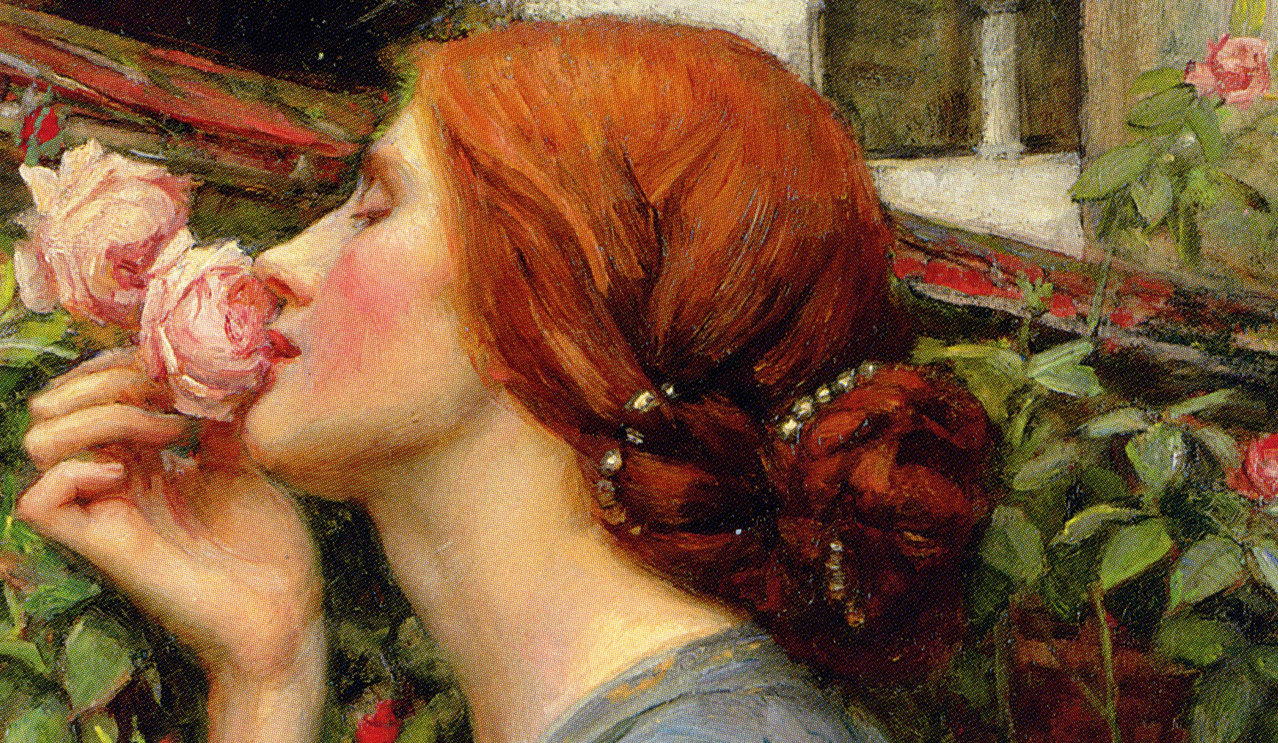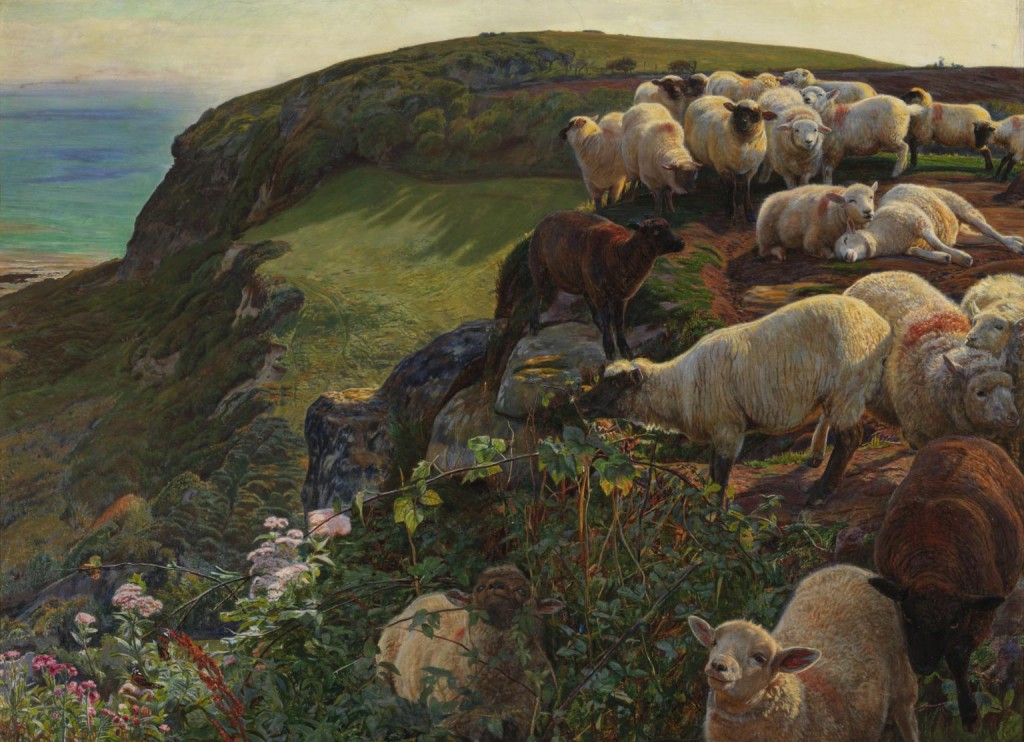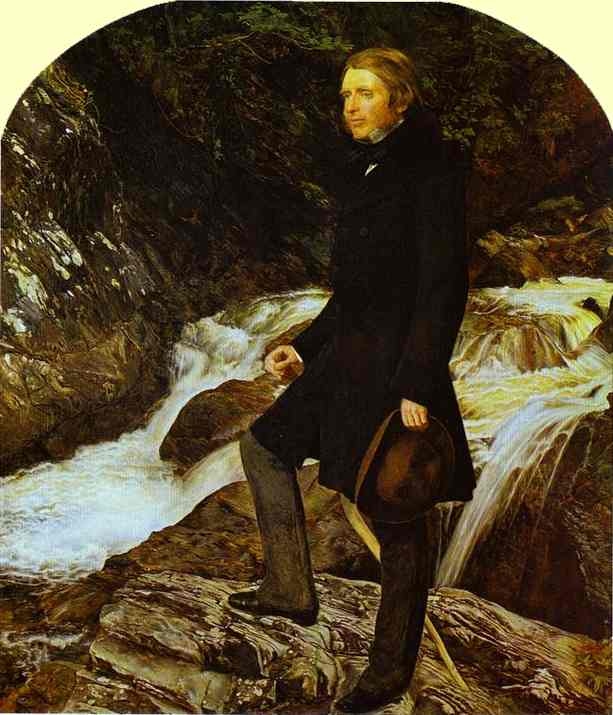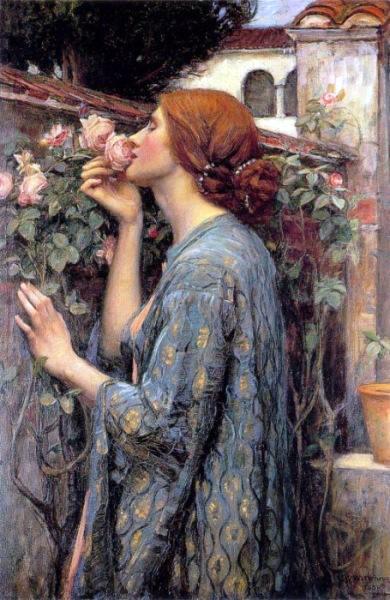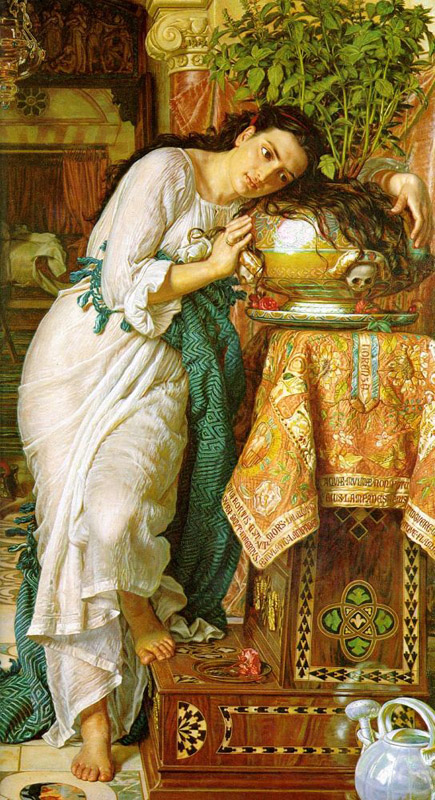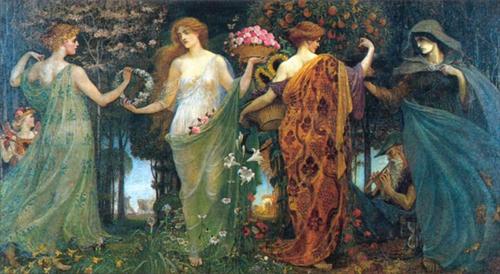In Modern Painters, John Ruskin urged artists to “go to nature in all singleness of heart… rejecting nothing, selecting nothing and scorning nothing; believing all things to be right and good, and rejoicing always in the truth.”
The Pre-Raphaelites and their followers took this advice to heart. In Millais’ Ophelia, for example, we can see botanical details recreated with beautiful precision.
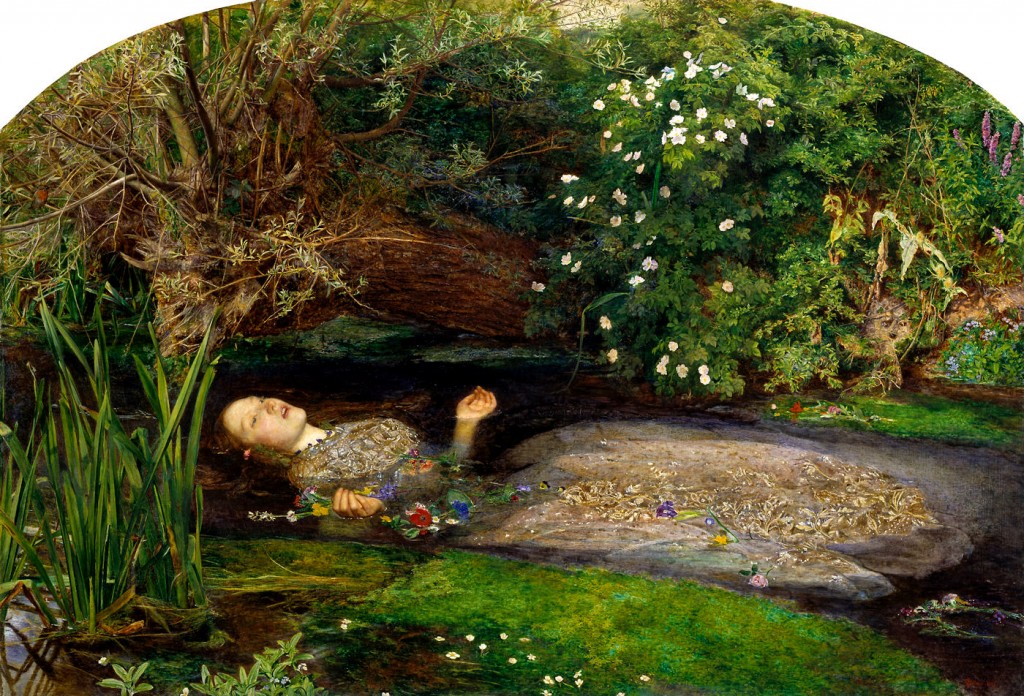
Millais’ painting Apple Blossoms is another painting of botanical delight. Full post here.
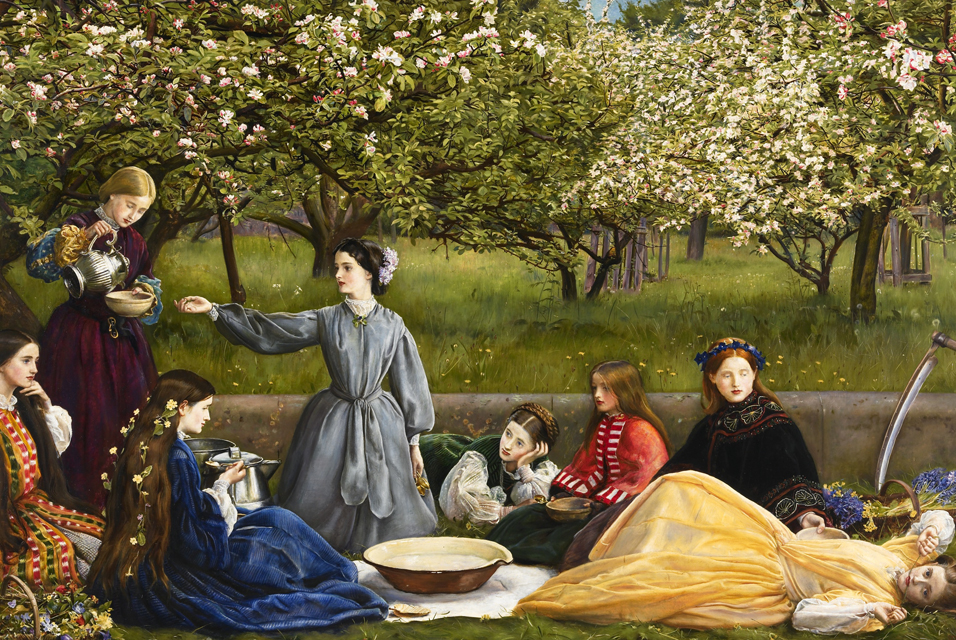
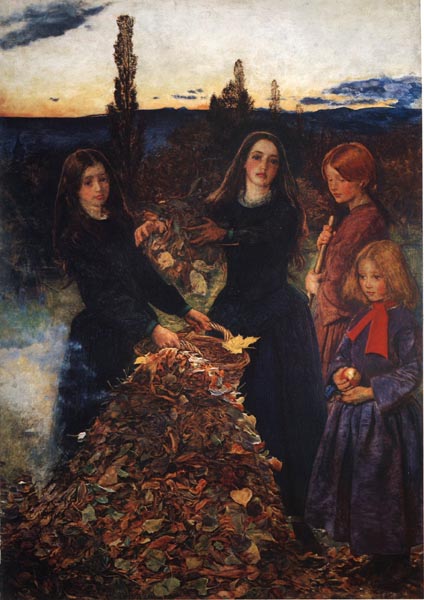
The basic theme of both Apple Blossoms and Autumn Leaves is the same: time passes, change is our only constant. Spring growth becomes the crunching leaves we trod over when Autumn rolls around.
Another example of nature in Pre-Raphaelite art is Our English Coasts, 1852 by William Holman Hunt:
Millais once painted John Ruskin in front of a waterfall in Glenfinlas, Scotland, prior to the unpleasant break up of Ruskin’s marriage. Despite the ensuing drama (Millais went on to marry Ruskin’s former wife, Effie), the picture exists as a reminder of Ruskin’s influence on the Pre-Raphaelites and their desire to go forth into nature. The waterfall and rocky landscape are painted in almost photographic detail.
What do the Pre-Raphaelites have to do with our modern Earth Day?
Nothing, really, but I think that the principles they followed and the love of nature they embraced can inspire us to slow down and appreciate not just art, but the profound and majestic beauty of our world.
The Pre-Raphaelites, who tried to adhere to the maxim “truth to nature”, painted with an aim to preserve details of our natural surroundings in their truest form.
Let’s do our part to appreciate and conserve our planet and the beauties of nature that exist all around us.
We should never forget the messages found in such paintings as The Soul of the Rose or Autumn Leaves: time is fleeting. The cycle continues. All life, whether it be human, flora, or fauna, is by its very nature ephemeral.
Take care of each other. Make it count.
Other nature inspired posts:
Botanical Paintings: My Top Picks
Poppies: Sleep, Death, Remembrance



